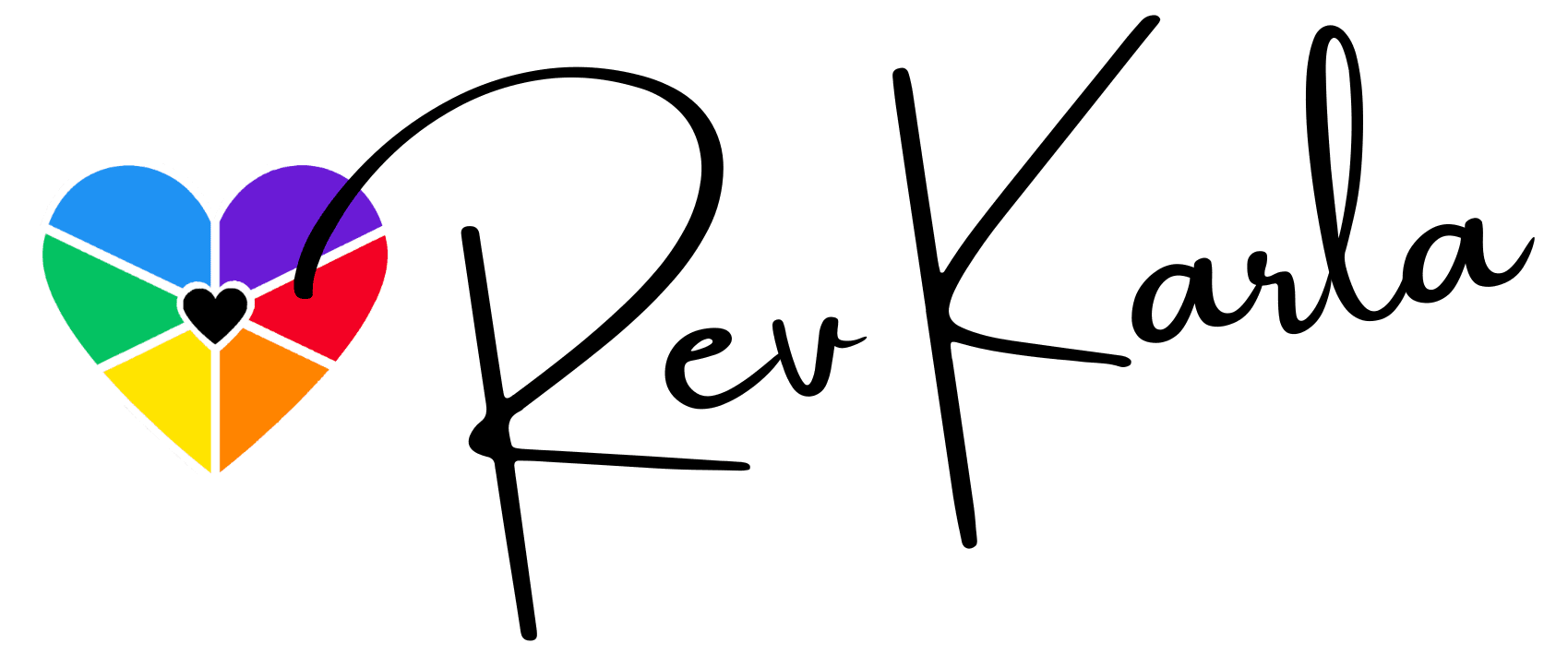Enlightenment
Awakening is Happening in the Little Moments of Living
A gentle warning: In this writing I share a story about a newborn puppy that was actively dying. For anyone who has held the space of a loved one while they were taking their last breaths, you will discover there is nothing out of the ordinary about this story—an animal’s dying process is similar to that of humans. Still, the innocence of a newborn puppy may prove too much for some. If so, this is the writing to pass over. If you are staying, know that I handle this story with the reverence it deserves.
I’m gonna be very honest for just a second. The title of this blog needs to be “Wake the f*ck up.”
I was resisting the urge to scream that at my phone. Because for some god-forsaken reason, TikTok’s algorithm had decided to plop a livestream of a woman who was giving us an update on the puppies that had been recently born to her German Shepherd dog.
In her lap, she held a newborn puppy. At first, he looked like a typical newborn puppy—eyes closed, smooth and shiny coat, the tiniest of features that seem to defy reality that this small creature would one day grow into the majestic beast that is the German Shepherd. Even through the camera, the innocence of new life could be felt as he squirmed to find comfort in her lap, prompting me to pause my scrolling and stay here for a minute.
The selfish side of me—the one that doesn’t want to be bothered by the suffering in the world—wishes I hadn’t stopped to watch that livestream. For in just a few minutes time, my perception changed from wonder to concern for the puppy’s well-being.
I did not have time to be drawn into this. But the algorithm doesn’t lie. Apparently my screen time concerning animals convinced this never-to-be-understood inner workings of social media that this is exactly what I needed to see.
So here I was, rushing to get ready but now with a phone in my hand, watching a newborn puppy’s struggle to stay in this world.
It was obvious that the woman loved the mama dog and was doing her best to tend to the needs of her and the newborn pups. She was stroking the puppy with the gentleness of someone who understands the fragility of newborns.
She noted how many people were joining the live (there were thousands of us), and began to share that this puppy was requiring special care because his birth had been unique. He was the first to arrive, and his birth had startled the first-time mom dog. So startled was she that immediately upon being born, the mom bit him—a sad occurrence in the animal kingdom when the mother feels threatened by the newborn’s arrival.
The woman went on to explain that the bite required stitches. Even with his traumatic entrance into the world, the puppy had been thriving. Seemingly no worse after the incident, the puppy latched on to his mother to nurse and had settled in with his litter mates.
Now the newborn puppy seemed to be struggling. The woman noted he cried regularly. It was obvious that he seemed to be struggling to be comfortable. Given that this livestream was happening in the early hours on a weekday, she assured us she’d be calling her vet once his office opened to have the puppy examined.
What transpired over the next few minutes was the puppy’s rapid decline as he continued to struggle for air. The oxygen the woman was blowing toward the pup did little to ease the puppy’s struggle.
“This is not going to end well” was the thought I had as I watched the puppy’s body begin to settle, and his breathing became less labored. The untrained eye might assume that he was beginning to rest comfortably. The woman holding him thought as much and shared that he was beginning to settle down nicely.
Except he wasn’t. The puppy was clearly dying and was now in agonal breathing, a fake breath that signals that breathing has become an auto response but not enough to sustain life.
I had seen this before, just a few months earlier as I sat beside my mother-in-law and held the space as she moved closer to death. I had seen it in a dog at the spay/neuter clinic* I founded—my first experience with agonal breathing. I had seen it when my aunt was nearing death as she lay in the hospital after suffering what would be a fatal heart attack. And I had learned about it when I took my end-of-life doula training.
There’d be no multi-tasking now, for even through the digital experience of social media, I found myself drawn to pause and hold the space for this tiny puppy who clearly would not make it in time for the veterinarian to intervene, even if their intervention would be useful. The fragility of this puppy with unknown internal injuries from his mother’s bite was clearly resulting in his passing.
The comments flowing over the screen revealed the vast majority of those watching were also oblivious to the puppy’s rapid decline.
“Awww, he’s sleeping.”
“I’m so glad he’s comfortable now.”
“Look, he's feeling better!”
I wasn’t going to comment. I rarely do in these forums, because the intended audience rarely sees them, and you become fodder for the trolls. Given the number of comments expressing joy for his “improvement,” it was clear that we are not in tune with the natural cycles of death.
Then there it was. A comment from a vet tech saying, “That’s agonal breathing, ma’am. He’s not going to survive.” As expected, the trolls descended upon her, accusing this vet tech of not knowing anything, of being a fake vet tech, and validating the woman’s knowledge over the vet tech’s. The woman, who was at that moment pushing oxygen toward the pup and talking about how much better he was doing.
The woman indicated she was ending the live to care for the mother and the other pups, and she assured us that she would check in later and give us an update on the pup. I bookmarked her account, but I knew what the update would be in a few hours. When I checked in later that afternoon, I was right. The puppy died soon after she ended the live. The shock she expressed indicated that she never fully grasped the reality of the situation as the dying puppy lay in her lap during that live.
I couldn’t be angry with her, nor all the people now making comments like, “Oh no! He was doing so good!” No—he wasn’t doing ‘good.’ He was dying, and 99.9% of you on that livestream missed it because you wanted to believe something else when right in front of you, that puppy was dying with every agonal breath.
I couldn’t be angry because I had no right to be angry. It wasn’t that long ago that I was them. That aunt who had lain in that hospital bed had been spiraling toward death all day. Yet I, her caregiver for 15 years, could not see that she was dying. I worried that if they didn’t turn her she’d have bed sores, and I worried that she hadn’t eaten all day, and I worried that the nursing home would give up her room if she didn’t return in a certain time, and I worried that the doctors weren’t doing enough because now she was unconscious when just a few hours ago she was talking to me….
I was worried that she was leaving me, and my worry about life without her overshadowed my ability to see that she was dying. That worry turned to rage as the nurse who had been harassing me for hours to step out of the room to talk to her, eventually forced me to come with her so that I could confirm the DNR that I had signed from an earlier emergency room visit was still my aunt’s wishes.
“It was, but why do you care?” I asked. That question reveals the extent of my own oblivion, the equivalent of mistaking a puppy’s resting body as “Oh, good. He’s getting better!”
A few hours after asking that question, my aunt would die, leaving me gutted and broken in a way I had never experienced. I had mourned my grandmothers, but this one hurt deeply. This aunt had been a caregiver like no other. And as I said at her funeral, blubbering through a constant stream of tears, that she was my shelter when life felt chaotic and unsafe.
After my aunt’s death, I began a journey to understand what parts of me had refused to see that she was dying. For years, I held regret for not being able to hold the space for her in her final hours. But my beliefs around death and dying have changed, and I have come to a place where I can forgive myself for only seeing the death of my aunt through the eyes of my inner child—the one who adored her and needed her as her safe harbor even as an adult.
I also know my aunt knows that, too. For if we came from Love, and Love is what we return to someday, then Love builds that bridge from here to there and those bonds are never broken.
And Love invites us to pause and remember that Love was here and that Love always remains. On that day when a little puppy lay dying in a woman’s lap, I’m reminded of how little we humans are aware of these moments when the cycle of birth, living, and dying are right in front of us. The moments where we could be present to honor what is before it is no more.
Instead we choose to attack those who offer us a harsh dose of reality—not harsh because it is cruel. Harsh because we are in denial. Then we lash out and attack their knowledge, like “You’re a fake vet tech,” or even their intent, as in “Why do you care?”
Life is happening right in front of us, Beloveds. And it was never supposed to be in the fairy tale moments of joy and harmony. We only know those to be what they are by accepting that their shadows of pain and sorrow exist.
On that day when I had no time, the TikTok algorithm felt I needed this reminder by offering me a story about a little puppy.
That puppy died, and I’m honored to have been there with that vet tech holding the space for just a little while.
And that is Love.
Blessed be.


